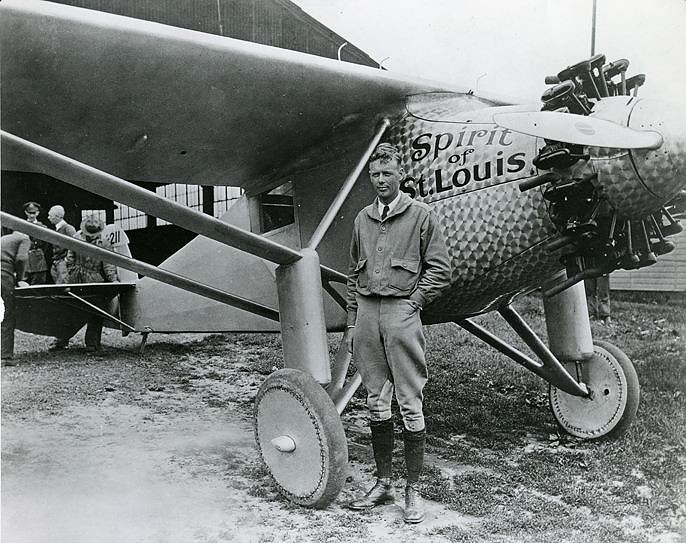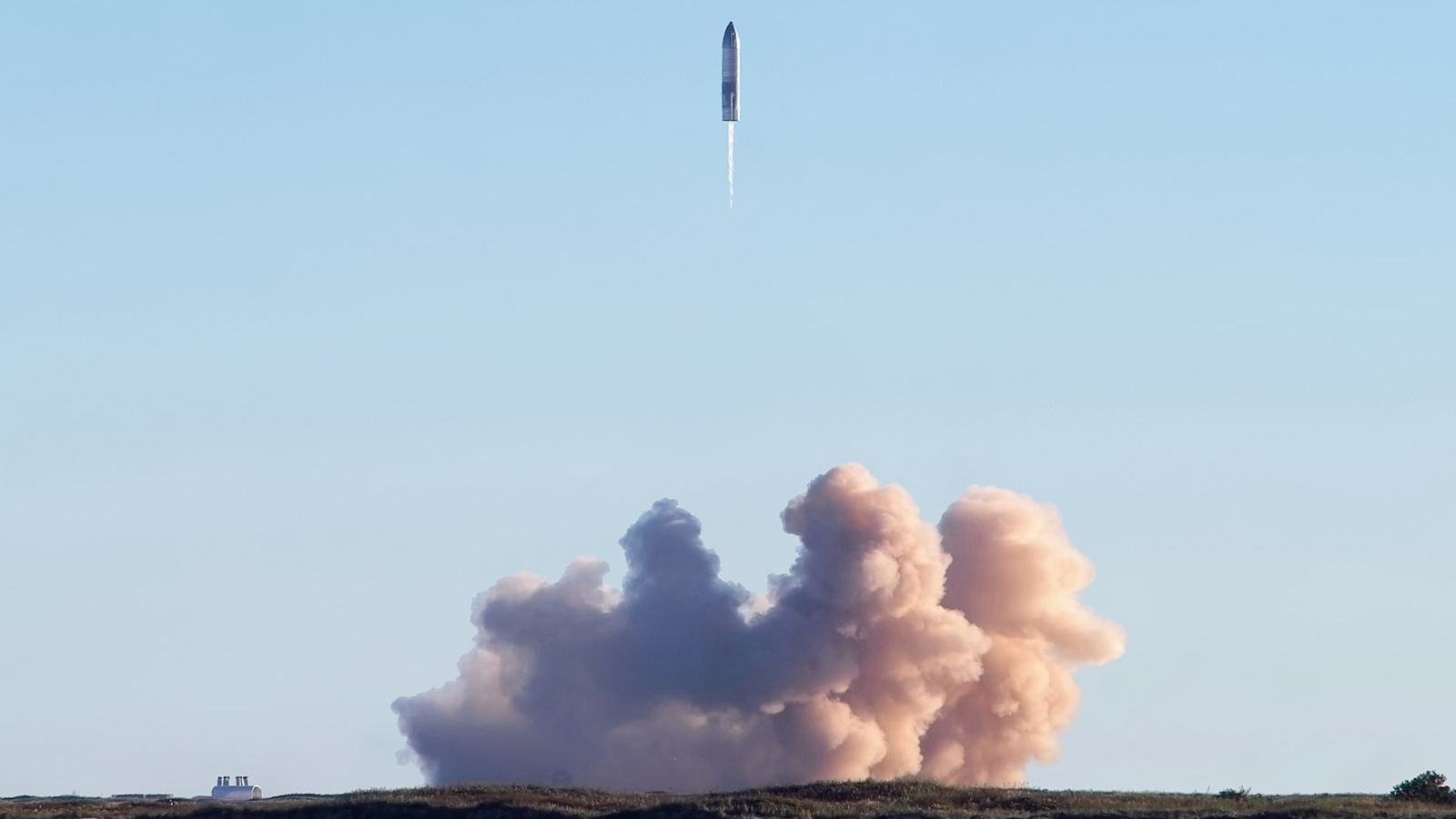Charles Lindbergh and the First Solo Transatlantic Flight
Reference Article

As Charles Lindbergh piloted the Spirit of St. Louis down the dirt runway of Roosevelt Field in New York on May 20, 1927, many doubted he would successfully cross the Atlantic Ocean. Yet Lindbergh landed safely in Paris less than 34 hours later, becoming the first pilot to solo a nonstop trans-Atlantic flight. He changed public opinion on the value of air travel, and laid the foundation for the future development of aviation.
Preparing for the voyage
Born only a year before the Wright brothers made their first historic flight at Kitty Hawk, North Carolina, Charles Lindbergh grew up in the grip of aviation fever. Though he attended college to study engineering, he was drawn to the skies.
"The life of an aviator seemed to me ideal. It involved skill. It brought adventure. It made use of the latest developments of science. Mechanical engineers were fettered to factories and drafting boards while pilots have the freedom of wind with the expanse of sky. There were times in an aeroplane when it seemed I had escaped mortality to look down on earth like a God."— Charles Lindbergh, in his book, "We — Pilot & Plane" (G.P. Putnam's Sons, 1927)
Lindbergh left college to become a barnstormer, a stunt pilot performing daredevil tricks at fairs. In 1924, Lindbergh enlisted in the U.S. Army, training at the Army's flying school, where he graduated first in his class. After graduation, he became a postal pilot, flying the mail from St. Louis to Chicago.
In 1919, Raymond Orteig, a hotel owner in New York City, offered a prize of $25,000 to the first pilot to fly nonstop from New York to Paris. By 1927, four men had died, three were seriously injured and two others went missing during their attempt, and the prize remained tantalizingly out of reach.
Lindbergh persuaded nine St. Louis businessmen to finance his attempt, using their funds to build a special plane that Lindbergh helped design. Named in honor of his sponsors, the plane was called the Spirit of St. Louis.
The plane's single-engine design caused many to doubt its ability to cross the vast Atlantic. Previous attempts had all included multi-engine planes. Also, co-pilots had been a staple on the 3,500-mile (5,632-kilometer) journey, but Lindbergh intended to fly alone. Lindbergh omitted a parachute and a radio from his gear, opting to include more gasoline. The newspapers called him "the flying fool."
Alone in the sky
On May 20, 1927, at 7:52 a.m., the Spirit of St. Louis accelerated down the runway at Long Island, New York, and took off into the sky while a crowd of 500 watched. The plane barely cleared the telephone wires at the end of the strip.
Lindbergh flew over Cape Cod and Nova Scotia, reaching the ocean as the sun set. Fog thickened in the night sky, and sleet formed on his plane when he attempted to pass through the clouds. He struggled with drowsiness, fighting to stay awake as he sometimes flew only 10 feet above the ocean.
A tiny fishing boat provided the first sign that he had reached Europe, and within an hour he had reached land. He flew about 1,500 feet (460 meters) over Ireland and England, then headed toward France as the weather cleared. Darkness fell again as he passed over the coast of his target country.
After traveling more than 3,600 miles (5,800 kilometers) in 33.5 hours, Lindbergh landed safely in Paris. A crowd of 100,000 swarmed around the plane, hoisting the pilot on their shoulders and cheering his achievement. The papers called him the "Lone Eagle" and "Lucky Lindy."
After the flight
On his return home, Lindbergh toured 92 cities in 49 states, extolling the virtues of aviation to adoring crowds. He received the Medal of Honor and the Distinguished Flying Cross from President Calvin Coolidge, and continued to serve the United States as an aviation consultant.
He flew to several countries in Latin America at the request of the U.S. government. It was during that time that he met his future wife, Anne Morrow, daughter of the American ambassador to Mexico. Lindbergh taught his wife to fly, and the two flew together around the world, plotting routes for various airlines.
Lindbergh baby kidnapping
Tragedy struck in 1932 when the couple's first child was kidnapped from their home. The crime made headlines around the world. The Lindberghs paid the $50,000 ransom but, sadly, the boy's body was found in nearby woods weeks later. A carpenter, Bruno Hauptmann, was arrested and charged with murder. Although he pleaded innocent, according to the Encyclopedia Britannica, he was found guilty and was executed in 1936. The Lindberghs later had five more children.

America First
In 1941, Lindbergh joined the America First Committee, which opposed the U.S.'s entry into World War II, and some people accused him of having Nazi sympathies. After the Japanese attack on Pearl Harbor, however, the committee dissolved and asked its members to support the war, according to the Encyclopedia Britannica.
Lindbergh became a technical adviser to the Army and Navy. He flew 50 combat missions and helped develop cruise-control techniques that increased the capabilities of American fighter planes.
After the war, Lindbergh worked as a consultant to the U.S. Air Force, became involved in the environmental conservation movement, and wrote several books, including "The Spirit of St. Louis" (Charles Scribner's Sons, 1954), which won a Pulitzer Prize in 1954. He also visited the Apollo 8 crew shortly before their journey to the moon, the first for humankind.
Lindbergh died of cancer on Aug. 26, 1974, at his home in Hawaii. His many posthumous honors include NASA naming the flying SOFIA Observatory "Clipper Lindbergh" in 2007, his name gracing a crater on the moon, and having his Minnesota house repurposed as a museum honoring his life.
Additional resources:
- Read more about Charles Lindbergh and the Spirit of St. Louis on CharlesLindbergh.com.
- Learn about the Lindbergh Foundation, which promotes pioneering aviation technology.
- Watch a short video about Lindbergh's remarkable flight from New York to Paris from Biography.com.
This article was updated on June 11, 2019 by Space.com contributor Elizabeth Howell.
Join our Space Forums to keep talking space on the latest missions, night sky and more! And if you have a news tip, correction or comment, let us know at: community@space.com.
Breaking space news, the latest updates on rocket launches, skywatching events and more!

Nola Taylor Tillman is a contributing writer for Space.com. She loves all things space and astronomy-related, and always wants to learn more. She has a Bachelor's degree in English and Astrophysics from Agnes Scott College and served as an intern at Sky & Telescope magazine. She loves to speak to groups on astronomy-related subjects. She lives with her husband in Atlanta, Georgia. Follow her on Bluesky at @astrowriter.social.bluesky
